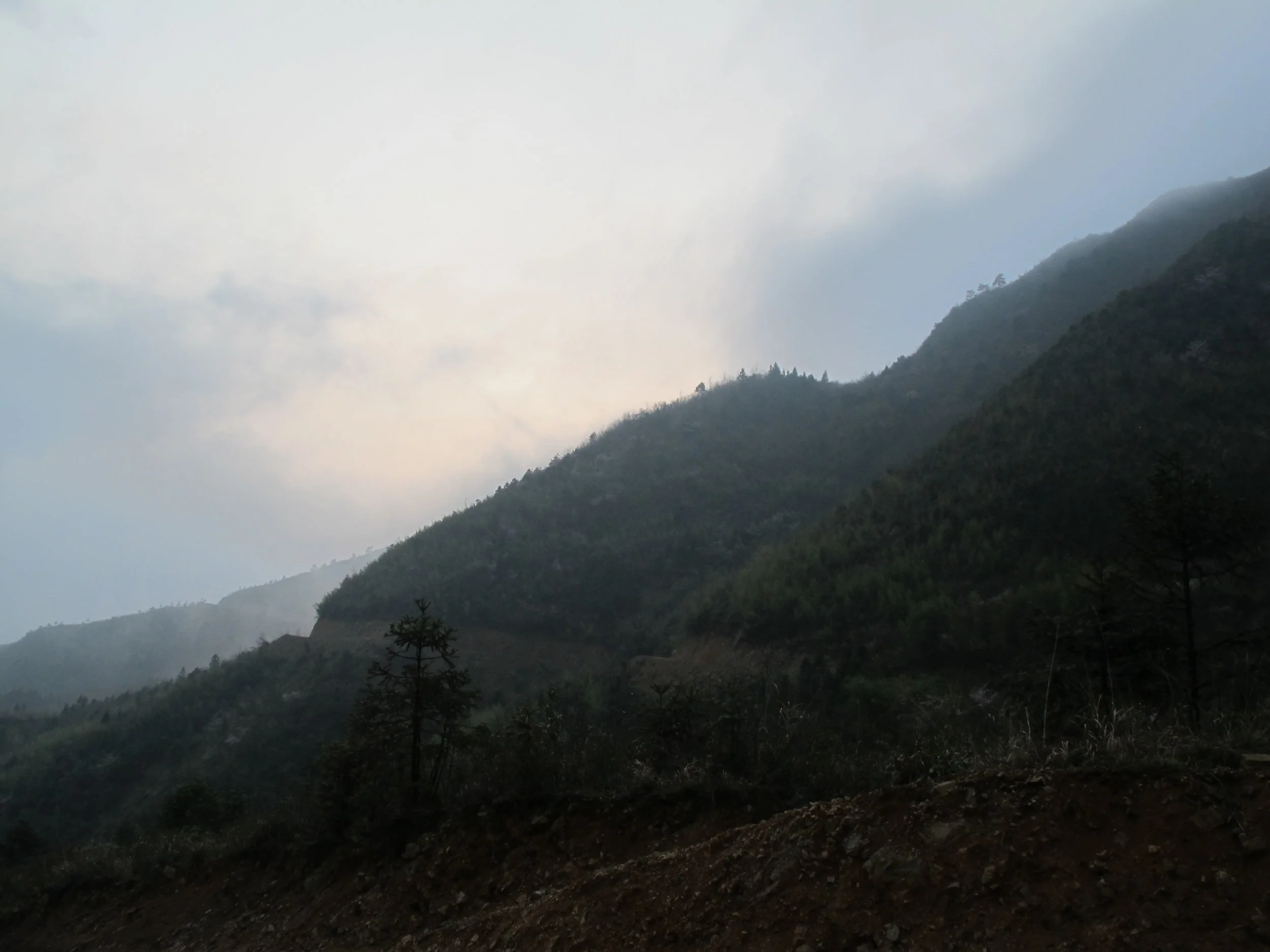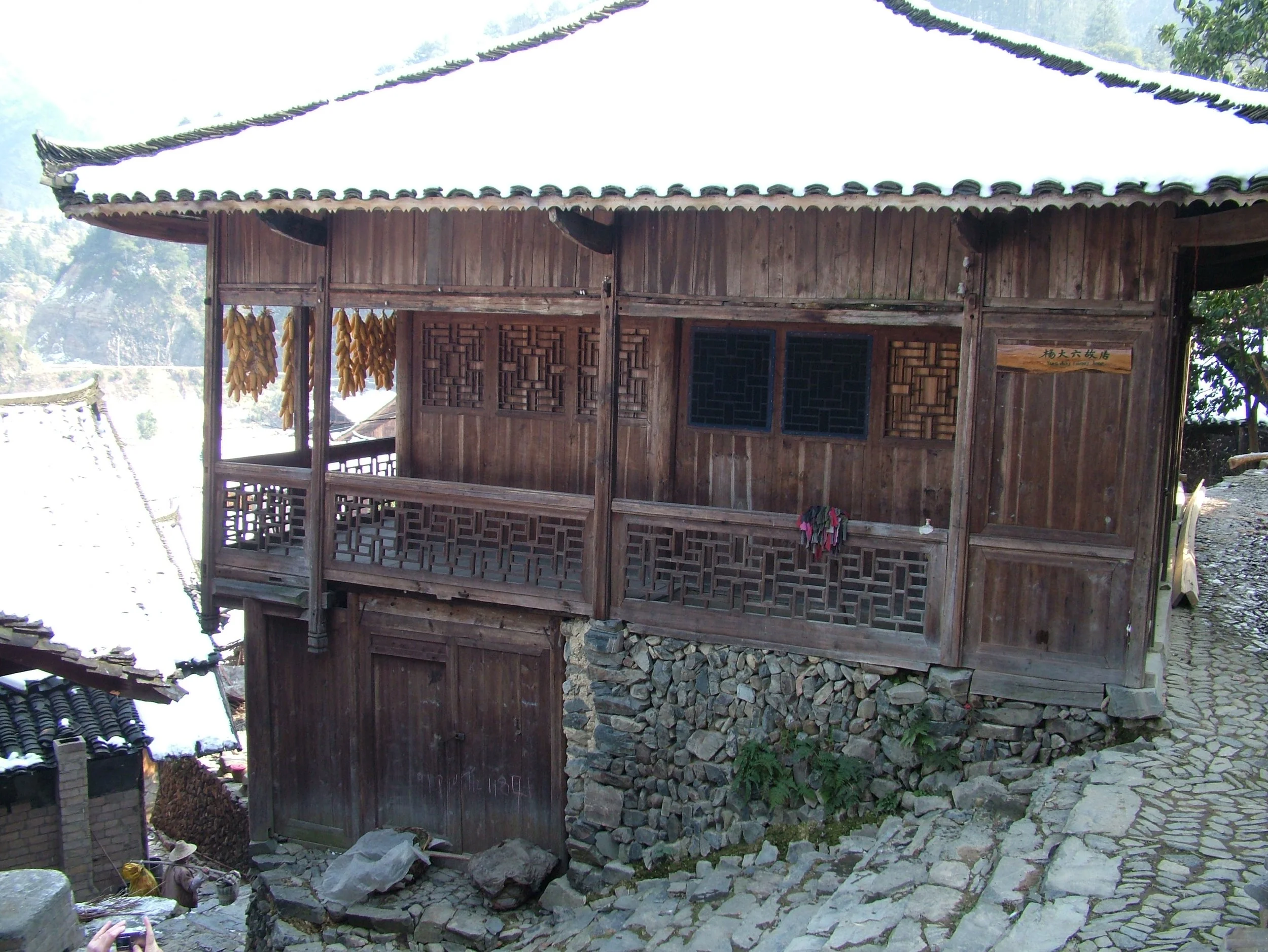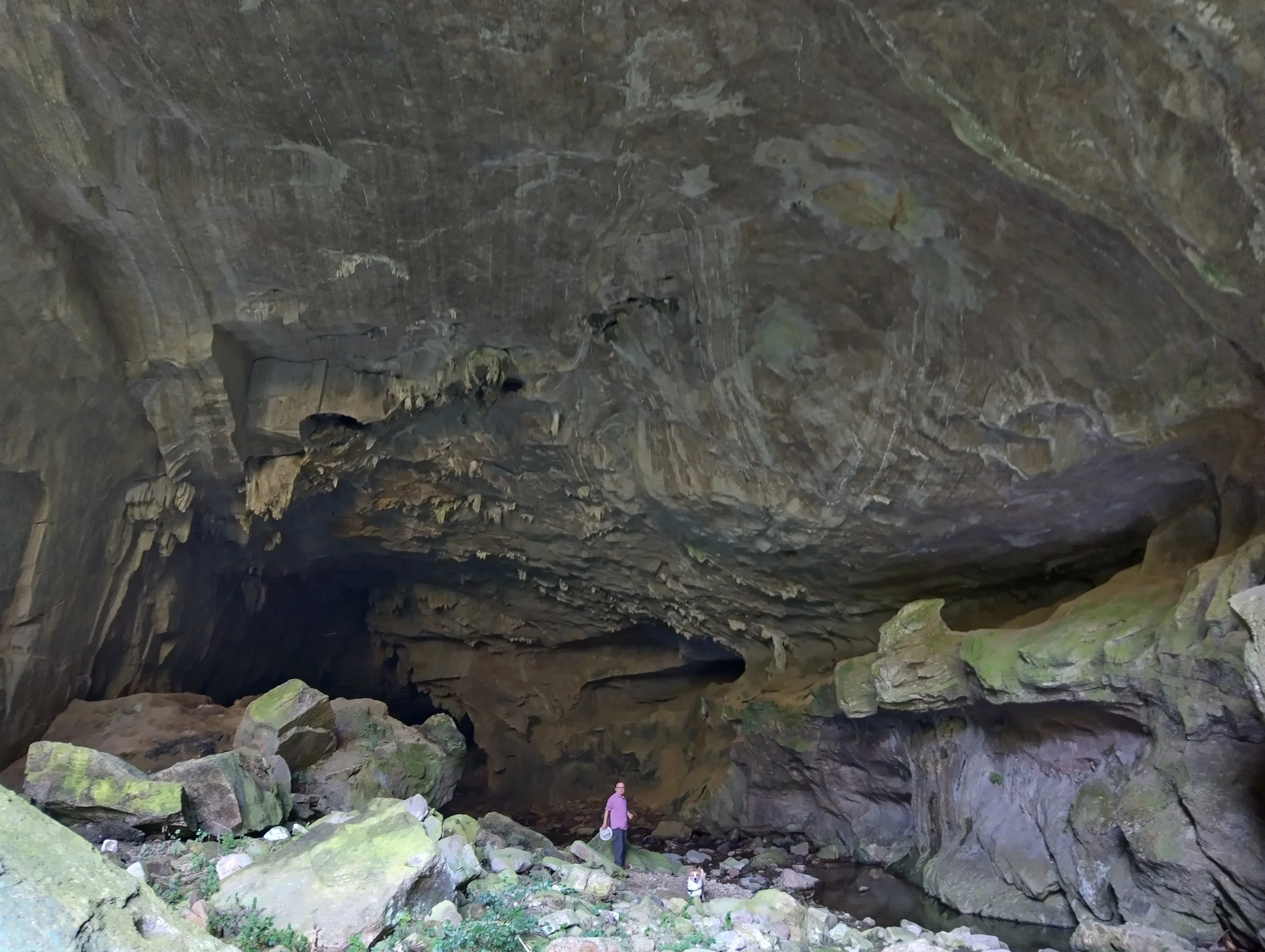Wuyapo 1872: Final Campaign of the Miao War 烏鴉坡戰役
This article replaces an earlier post on Wuyapo from 2016, after revisiting the battle site in March 2025
The story goes that the Miao Uprising began on 15 March 1855* when the Three Miao Heroes – Zhang Xiumei (張秀眉), Jin Dawu (金大五) and Bao Dadu (包大肚) – met at the watery hamlet of Pingshui in southeastern Guizhou and swore an oath to join forces in a rebellion against the oppressive local Chinese authorities.
The oath-taking hamlet of Pingshui 平水. Historically the village was called Shuiniu Zhai, 水牛寨, Water Buffalo Stockade, or Zhang Meini in Hmong, transliterated into Chinese as 掌麻你. Many places and people related to the Miao Uprising have a confusing range of aliases; for example Jin Dawu was also known as Li Kaiyuan 李開元, Jin Gangxiang 金剛相 and Jin Gan’gan 金幹幹
For the next thirteen years, while the Qing government over in eastern China was struggling to cope with the Taiping Uprising and Second Opium War, the Miao pretty much controlled southeastern Guizhou. The Chinese had their first brief success in January 1868 when the Hunan Army general Xi Baotian (席寶田) defeated a Miao contingent led by Wanguan Baoniu (萬官保牛), though Xi’s battalions were later virtually anihilated by Bao Dadu’s troops at Huangpiao.
It took another eighteen months to get Chinese operations back on track, but by late 1871 the Qing military had succeeded in clearing and recapturing Miao-held districts across the southeast – including the mountainous Leigong Shan area (雷公山), blocking Miao retreat in this direction.
Chased out of their strongholds, in early 1872 remaining Miao forces – tradition says 200,000 people – began gathering at Wuyapo and adjacent Niujiaopo mountains (烏鴉坡, 牛角坡), east of modern Zhouxi town. Wuyapo and Niujiaopo mean “Crow Mountain” and “Buffalo Horns Mountain” respectively; in Hmong their names are Bi Gu Mu (Coolie Hat Mountain) and Bi Gi Ni (Buffalo Horns Mountain again).
Lower slope of the mountains in 2016
The Wuyapo ridge runs north-south with Niujiaopo crossing it at right angles; Wuyapo peaks at 1408 metres giving all-round views from the top. The Miao built camps and defences in the forest up here, collected water from springs and stockpiled supplies of grain. Aside from the Three Heroes, rebel leaders at Wuyapo included Gao He (高禾), Yang Daliu (楊大六), Jiu Dabai (九大白) and an ethnic Zhuang fighter from adjacent Guangxi province, Li Zaifu (李崽腐, aka Li Wencai 李文彩). The Chinese considered Li to be a former Taiping Uprising general and were particularly keen to capture him.
The Miao were armed with pole weapons and swords; they were also skilled at sniping with long-barelled niaoqiang guns. The Chinese had similar swords and spears, but their firearms and artillery was superior, including modern European rifles, rockets and cannon. Both sides used horses to some extent, though cavalry weren’t effective on the mountainside.
Fighting began on April 29 (March 10 by the lunar calendar) when Qing forces – Hunan and Sichuan army battalions plus miscelaneous divisions from Guizhou and Yunnan, totalling around 75,000 troops – attacked the area around what is now Yingpan village (營盤村) at the foot of Wuyapo. The battle lasted seven days; at one point the Chinese attempted to set fire to the mountain’s thick vegetation, but the Miao had cleared fire breaks and the tactic failed. Despite fierce resistance during which the Miao leader Jiu Dabai was killed, Bao Dadu’s forces were finally beaten and “over 10,000 Miao surrendered”. Bao himself escaped.
The Qing army moved up to occupy the lower slopes, laid siege to the mountain and reduced the Miao forces to starvation. Yang Zhanrong (楊占榮), a local villager born in 1910, heard from his elders that at the time the mountainsides were so full of people that “at night, the stars in the sky and the bonfires on the ground became one, you couldn’t tell the difference between heaven and earth. [Food ran so short that] people not only cut down and burned all the trees on the mountain, but also left no grass. Later, cannibalism occurred everywhere. People set up a big pot and threw the dead into it with water.”
Niujiaopo summit from Wuyapo
On May 7 (March 18 lunar) Xi Baotian led 30,000 troops in an all-out attack on Niujiaopo, destroying Yang Daliu’s position with artillery fire. Two days later the Chinese overwhelmed Niujiaopo and Zhang Xiumei took his surviving followers and retreated over Wuyapo to break through the Chinese siege. On May 11 (March 22 lunar) the remaining defenders were beaten in a two pronged attack, forcing Yang Daliu and Jin Dawu to follow Zhang Xiumei in fleeing northeast off the mountain. The Qing general Su Yuanchun (蘇元春) overran final Miao resistance and the Wuyapo campaign was over.
In 1990, Miao author Wu Lue (Long Mingwu 伍略/龍明伍) recalled his father telling him that “some old people in Qingman village climbed up a high slope behind to watch the distant battle at Wuyapo. The Qing soldiers attacked from the bottom of the slope, and the gun smoke pushed up like a thick fog, and then the thick fog pushed down from top to bottom, and so on several times. The last time the thick fog slowly pushed up, it suddenly pushed to the top of the mountain. The old people who were watching at the time burst into tears and shouted "Our young men have failed..."
Modern estimates believe about 60,000 Miao died at Wuyapo alongside 6,000 Chinese. At the time, the official Peking Gazette – wanting to report a spectacular victory – announced that “at the taking of Niujiaopo alone, 200,000 rebels were killed”. Whichever is closer to the mark, Miao and Chinese bones littered the mountain slopes for years afterwards until locals buried them in two separate mass graves, now sadly lost.
Stone tablets at the southern foot of Wuyapo name all the leaders, Chinese and Miao, believed to have taken part in the campaign. Included is the British adventurer and arms instructor William Mesny, who had enrolled in the Sichuan Army and fought against the Miao 1868–1870, but who was either besieging Muslim insurgents in western Guizhou or living in Guiyang during the fighting at Wuyapo.
“Mesny, (1842-1919): a weapons expert from Jersey, Britain. In March 1872, he advised the Qing army on the use of modern firearms in warfare.”
In the weeks following Wuyapo, Miao leaders who had escaped the slaughter were tracked down and killed by Qing forces. According to the Peking Gazette:
After the defeat at Niujiaopo, [Li Zaifu and some Miao leaders] escaped to Liujiazhuang, where they collected the remants of their forces to the number of 20,000... on 9 May [28 June] they were overtaken at Chingpeng and a battle fought. The rebels were defeated with the loss of 6000 killed and 400 prisoners... [having fled, the survivors] were completely surrounded by the troops and seeing this they lost heart; 3000 laid down their arms and surrendered; 5000 were cut down by the troops, 20 “kings” and “generals” taken prisoner, besides some 700 stragglers who were killed... Only about 2000 were now left of the whole party, but among them were the famous Li Zaifu and Li Gaoqiu... The fortress at Niutang was stormed and taken, Li Zaifu was struck from his horse by a spear, Li Gaoqiu killed, his brother styled the Third King taken prisoner, and the whole party exterminated... Li Zaifu was so badly wounded that it was feared he would die before he could be executed; [so the Qing commander] Yu Wenxiu therefore had him put to death in the presence of the troops, in the most painful manner possible. His body and that of Li Gaoqiu were afterwards cut in pieces and their heads sent to the camp of the commander-in-chief Zhou Dawu”.
Yang Daliu’s house at Langde Shang village (郎德上). Following the collapse of Miao resistance in 1872 all of Yang’s family were killed and Langde – today a pretty collection of cobbles and wooden houses – was razed to the ground; only 13 people are said to have survived
Zhang Xiumei and Yang Daliu retreated towards Leigong Shan only to find Chinese forces had occupied the area; they were captured by General Deng Youde (鄧有德) at Wudongpo (烏董坡 ), a little mountain about 55km southeast of Wuyapo. According to the Peking Gazette the two were executed at Changsha, capital of Hunan province, alongside their fellow rebel Jin Dawu, who had been captured at Baishui Dong, a huge cavern hidden in the limestone hills above Kaitang town, not far from the hamlet of Xiaowengbie (凯堂乡小翁別寨).
Inside Baishui Dong
The Gazette went on to say that Deng Youde also captured Gao He after a fight near Leigong Shan: “More than 1000 rebels were killed and 600 made prisoner. Gao He however made his escape, but was pursued and captured along with his cabinet minister Ao Baoxiang. 76 rebel generals and 580 veterans were also taken and beheaded, besides 2000 of the common rank and file... an express was sent ordering general Deng Youde to forward Gao He and Ao Baoxiang to the provincial capital, but to decapitate the other prisoners in the presence of the army.”
Another version credits Gao He’s capture to the famous Miao traitor Wen Guoxing (闻國興) whose base was at Babaoshan (八寶山), about 50km southeast of Wuyapo. The previous year ther Peking Gazette noted that “the rebel leader Bao Dadu, having attacked Babao Shan, was repulsed”, and now Bao again attempted to hunt down Wen but was taken at his own stronghold, Pingcha (平茶), about 10km northwest of Wuyapo. Yet another story says that Bao Dadu handed himself in after being offered an amnesty by a disgraced Chinese general, who then revived his own career by surrendering Bao to his superiors. Whichever is true, Bao Dadu was captured after Wuyapo and sent to Guiyang to be executed by slow slicing.
*Some modern sources say 1856, but contemporary accounts – including the Military Annals of Southeastern Guizhou (黔东南军事志) – state the uprising began in the fifth year of the Xianfeng Emperor’s reign, which was 1855. “March 15” is also more likely to mean “the fifteenth of the third lunar month”, as local tradition believes that the annual Sisters’ Meal Festival – held on that date – was used as cover to gather so many people together at Pingshui. In 1855, this would have been April 30th by the Gregorian calendar.
Many thanks to Mr Li Maoqing, who introduced me to Wuyapo in 2016; and to Yu Dow and his wife, Chairman Li, Mr Pan Hongbo, Kaitang government historian Mr Deng and Wuyapo historian Yang Yuzi (who gave me a signed copy of his book) for taking me to Pingshui, Wuyapo and Baishui Dong in 2025.
Sources
Jenks, Robert Insurgency and Social Disorder in Guizhou: the “Miao” Rebellion 1854–1873 (University of Hawaii Press 1994)
North China Herald October 5 1872, pp282–283 (Abstracts of Peking Gazette Aug 31–Sept 3)
Yang Yuze Storm from Yingpan Village (杨育泽: 营盘村风云; China Publishing Group Modern Publishing House 2014)





